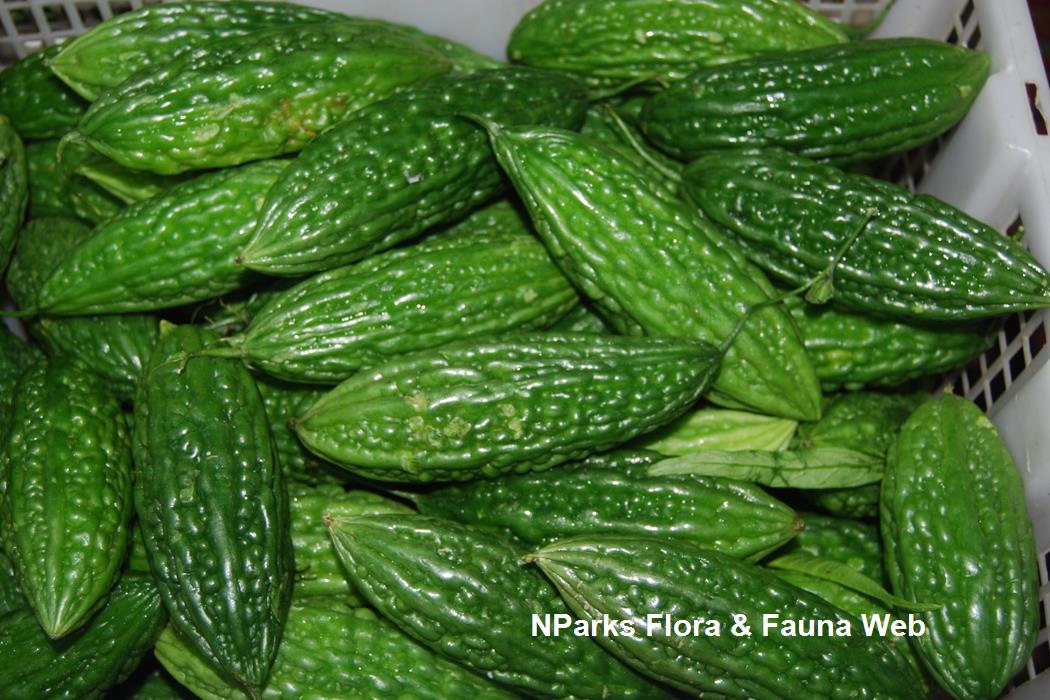
Back
Momordica charantia
| Family Name: | Cucurbitaceae |
| Synonyms: | Sicyos fauriei, Momordica elegans, Momordica sinensis, Momordica operculata, Momordica indica, Momordica chinensis |
| Common Name: | Bitter Gourd, Bitter Melon, Bitter Cucumber, Balsam Pear, Leprosy Gourd, La-kwa, Peria Laut, 苦瓜 |
Name
Classifications and Characteristics
| Plant Division | Angiosperms (Flowering Seed Plants) (Dicotyledon) |
|---|---|
| Plant Growth Form | Climber |
Biogeography
| Native Distribution | Pantropical |
|---|---|
| Local Conservation Status | Cryptogenic |
Description and Ethnobotany
| Growth Form | A monoecious, herbaceous annual. It is a climber and has a twining growth form and climbs with the aid of tendrils. |
|---|---|
| Foliage | The leaves are simple, palmately veined with a lobed and crenate margin and are alternately arranged along the stem. |
| Flowers | The flowers are solitary and yellow. |
| Fruit | The fruit is a pepo and is ovate-elliptical to elongate-fusiform. Chinese varieties are densely covered in warty bumps, while Indian varieties tend to be spikey. The immature fruit is green with white seeds. The fruit turns orange when mature and splits open from top down to reveal bright red seeds. |
| Cultivation | Seeds may take 5 to 7 days to germinate. Depending on the varieties, the plant may take 50 to 60 days to mature. Grow the plant in a sunny location with a support or trellis. |
| Ethnobotanical Uses | Edible Plant Parts : Edible Fruits Food (Fruit or Vegetable): The immature fruits are often cooked and eaten as a vegetable. They are rich in vitamins A and C. To reduce the bitter taste, the sliced gourd can be marinated in salt and squeezed to remove the bitter juice. After rinsing the slices, the spongy interior and seeds are removed. They are often stir-fried, stuffed with minced pork, fried with eggs or added to soups. Medicinal: The fruits are used in folk medicine to treat diabetes. Its juice is applied externally to treat skin disorders and its juice is drunk as a cure for arthritis, rheumatism and asthma. Studies have shown that eating the fruits may help in lowering blood glucose levels. |
Landscaping Features
| Desirable Plant Features | Ornamental Fruits |
|---|---|
| Landscape Uses | Parks & Gardens, Small Gardens, Vertical Greenery / Green Wall, Trellis / Arbour / Pergola |
| Thematic Landscaping | Economic Garden |
Plant Care and Propagation
| Light Preference | Full Sun |
|---|---|
| Water Preference | Moderate Water |
| Plant Growth Rate | Fast to Moderate |
| Rootzone Tolerance | Well-Drained Soils, Fertile Loamy Soils |
| Propagation Method | Seed |
| Seed / Spore Germination Duration | 5 days to 7 days |
Foliar
| Foliage Retention | Evergreen |
|---|---|
| Mature Foliage Colour(s) | Green |
| Foliar Type | Simple / Unifoliate |
| Foliar Arrangement Along Stem | Alternate |
| Foliar Attachment to Stem | Petiolate |
| Foliar Shape(s) | Non-Palm Foliage |
| Foliar Venation | Palmate |
| Foliar Margin | Crenate |
Floral (Angiosperm)
| Flower & Plant Sexuality | Unisexual Flowers , Monoecious |
| Flower Colour(s) | Yellow / Golden |
|---|
| Flower Grouping | Solitary |
| Flower Location | Axillary |
Fruit, Seed and Spore
| Mature Fruit Colour(s) | Orange, Green |
|---|---|
| Mature Fruit Texture(s) | Bumpy / Tuberculate |
| Fruit Classification | Simple Fruit |
| Mature Seed Colour(s) | Brown |
Image Repository
Others
| Master ID | 156 |
|---|---|
| Species ID | 1452 |
| Flora Disclaimer | The information in this website has been compiled from reliable sources, such as reference works on medicinal plants. It is not a substitute for medical advice or treatment and NParks does not purport to provide any medical advice. Readers should always consult his/her physician before using or consuming a plant for medicinal purposes. |

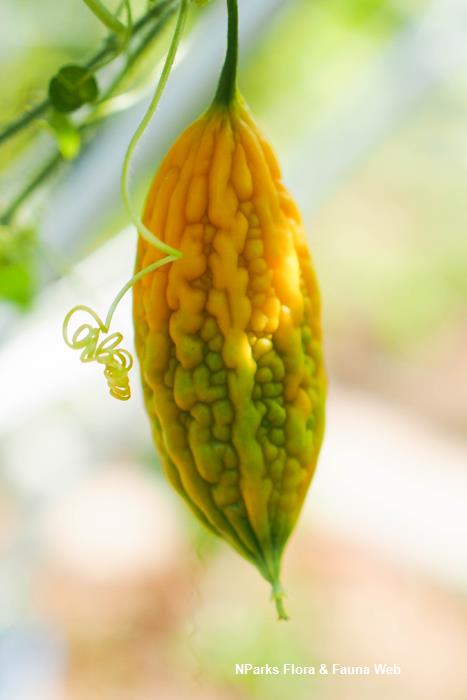
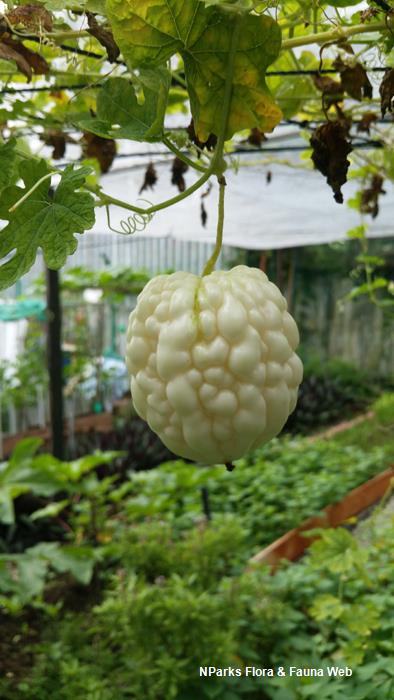
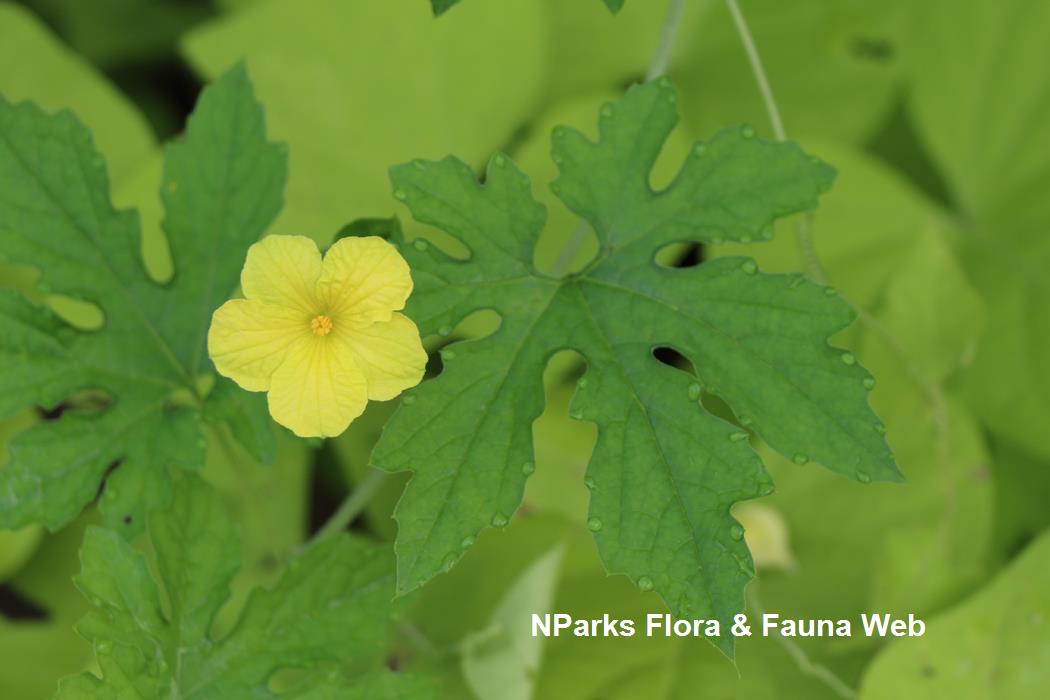
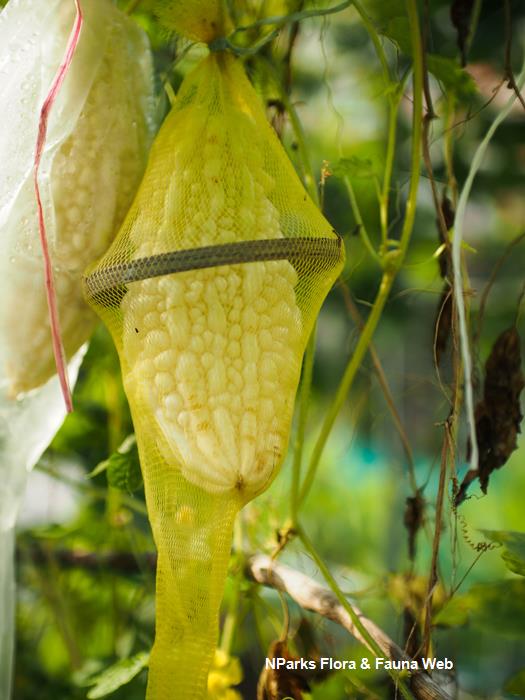











.jpg)